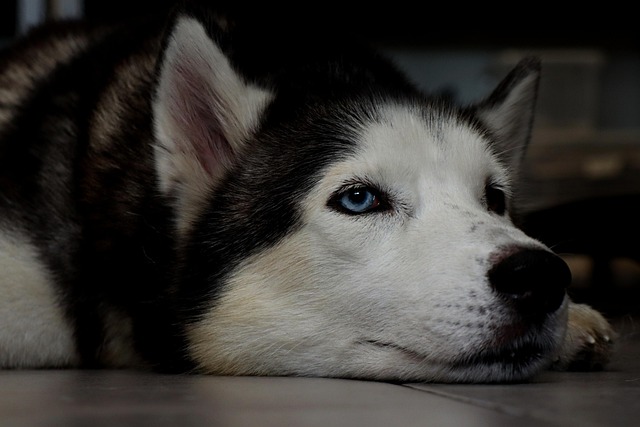
How can I tell if my dog's heatstroke is serious
Let’s be real: It’s a sticky August morning in Los Angeles, and you took your 2-year-old Golden Retriever, Max, for a walk a little later than usual
That tiny ball of fluff with icy blue eyes—your husky puppy—burns energy like a little furnace. Zooming around the living room, gnawing on every shoe in sight, then crashing for 20 minutes before repeating the cycle. All that chaos means their tummies need regular refueling, but figuring out how often can feel tricky. It’s not just about keeping them full; it’s about steady growth and avoiding the upset that comes with overfeeding or long gaps.
For puppies under 3 months, think small, frequent meals—four times a day works best. Their stomachs are still tiny, like a golf ball, so a cup of food split into four portions keeps their energy steady without overwhelming them. A breeder friend in Colorado swears by this schedule; her last litter of huskies thrived on 7 a.m., 11 a.m., 3 p.m., and 7 p.m. feedings, matching their natural burst of morning and evening activity.
Once they hit 3 to 6 months, three meals a day usually suffices. This is when those puppy paws start growing faster, and their bodies need a bit more fuel at each sitting. Try 8 a.m., 2 p.m., and 8 p.m.—times that fit around most work schedules. Just avoid free-feeding (leaving food out all day) during this stage. Huskies, even as pups, have a knack for overeating if given the chance, which can lead to obesity down the line—a concern vets in Canada often highlight for the breed.
 From 6 months to a year, two meals a day becomes the norm. By now, their metabolism slows a touch, and their bodies are prepping for adult size. Sticking to consistent times, like 7 a.m. and 6 p.m., helps regulate their digestion and aligns with their pack instinct—huskies thrive on routine, after all. In some European countries, where pet welfare laws emphasize structured care, this schedule is encouraged to maintain healthy weight and behavior.
From 6 months to a year, two meals a day becomes the norm. By now, their metabolism slows a touch, and their bodies are prepping for adult size. Sticking to consistent times, like 7 a.m. and 6 p.m., helps regulate their digestion and aligns with their pack instinct—huskies thrive on routine, after all. In some European countries, where pet welfare laws emphasize structured care, this schedule is encouraged to maintain healthy weight and behavior.
Portion size matters as much as frequency. A husky puppy at 12 weeks might need 1/2 to 3/4 cup per meal, while a 6-month-old could handle 1 to 1.5 cups. Check the food label, but adjust based on activity—those days spent hiking with you mean they’ll need a little extra. And always provide fresh water; dehydration is a risk, especially in warmer climates like Arizona, where even puppies can overheat during play.
Remember, neglecting proper feeding schedules isn’t just bad for their health—it can run afoul of local laws. Places like Oregon have strict animal welfare codes that require adequate, regular nutrition, and failing to meet those standards could lead to fines. More importantly, a well-fed husky puppy is a happy, well-behaved one—less likely to chew out of hunger, more likely to focus during training.
Watch for signs they’re getting enough: a sleek coat, steady energy, and firm stools. If they’re begging constantly or leaving food, tweak the portions. With time, you’ll find the rhythm that keeps your husky puppy growing strong—ready for all the adventures ahead.

Let’s be real: It’s a sticky August morning in Los Angeles, and you took your 2-year-old Golden Retriever, Max, for a walk a little later than usual

You're enjoying a summer afternoon at the park when you notice your dog has stopped panting and appears disoriented - their gums are bright red

Let’s paint the picture: You’re in your Denver apartment, watching your 4-year-old Boston Terrier, Ruby, plop down mid-play session with her favorite toy

Many dog owners notice their pets nails seem shorter after regular walks,but how much does this daily activity actually help?The answer depends on where you walk—concrete sidewalks or asphalt streets gently file nails as a dog's paws hit the ground

Most dog owners notice their pup scooting across the carpet at some point, but few connect it to impacted anal glands. These small sacs near a dog’s rectum secrete a scent for marking territory

Most vets agree that regular dog teeth cleaning is key to avoiding painful dental issues later. For healthy adult dogs, a professional cleaning at the vet’s office every 12 to 18 months usually works well.